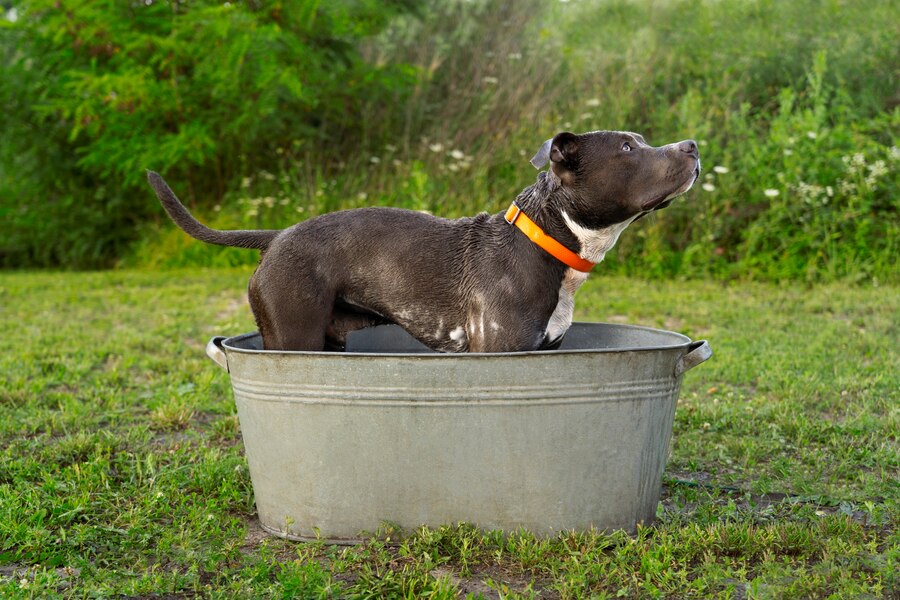Yes, you can pepper spray a dog, but it should only be used in self-defense. Pepper spray can cause pain and distress to the animal.
Pepper spray is a tool designed for self-defense against potential threats, including aggressive dogs. It contains capsaicin, which causes irritation and discomfort. While it can effectively deter an attacking dog, it is crucial to use it responsibly and only as a last resort.
Misuse can lead to unnecessary suffering for the animal and potential legal repercussions for the owner. It’s always best to consider alternative methods for dealing with aggressive dogs, such as using a whistle, creating distance, or carrying a barrier. Responsible use ensures safety for both humans and animals.
What Is Pepper Spray?
Pepper spray is a self-defense tool. It contains capsaicin, a chemical found in chili peppers. This chemical causes pain and irritation. Pepper spray comes in a small canister. It is easy to carry in a bag or pocket. Many people use it to protect themselves from attackers.
Ingredients
The main ingredient is capsaicin. It is the same substance that makes chili peppers hot. Other ingredients include water, alcohol, and propellant. Some sprays have dyes. These dyes help identify the attacker later. All ingredients are chosen for their effectiveness in self-defense.
How It Works
Pepper spray works by irritating the eyes, nose, and throa
Pepper Spray And Dogs
Pepper spray can cause severe pain to dogs. It affects their eyes, nose, and skin. Dogs may feel a burning sensation. They might have difficulty breathing. Some dogs can even lose vision temporarily.
Pepper spray may cause panic in dogs. They may become aggressive or try to run away. This can lead to accidents or injuries. It’s important to be careful when using pepper spray around dogs.
Dogs sprayed with pepper spray might change behavior. They could become fearful or anxious. Some dogs might start to avoid people or places where they were sprayed. This can affect their social interactions.
Pepper spray can also make dogs more aggressive. They might feel threatened and try to defend themselves. This can be dangerous for both the dog and the person involved.
Safety Tips
Pepper spray should be a last resort. Use it when a dog is about to attack. Ensure there are no other options available. Always prioritize non-violent solutions first. For example, try to back away slowly. This might calm the dog. Only spray if the dog continues to charge.
Always aim for the dog’s face. This will stop the attack quickly. Hold the canister at arm’s length. Spray in short bursts. Each burst should last one to two seconds. This saves the spray and reduces waste. After spraying, move away to a safe distance. Check if the dog is retreating. If it is, leave the area immediately.
Legal Considerations
Understanding the legalities of using pepper spray on a dog is crucial. Laws vary by location, and improper use can lead to legal consequences. Always consult local regulations and consider humane alternatives.
Local Regulations
Local laws vary by region. Some places allow pepper spray for self-defense. Other areas may ban it. Always check local regulations before using pepper spray. Breaking these rules can lead to fines or jail time.
Potential Legal Consequences
Using pepper spray on a dog can have legal consequences. The owner might sue for injury to their pet. Police might also get involved. Documentation and evidence are important. Witnesses can help your case if you sprayed in self-defense.
Alternatives To Pepper Spray
Noise makers like whistles or air horns can scare dogs away. Dog repellent sprays with citronella can also work well. Ultrasonic devices emit sounds that dogs dislike. Personal alarms can startle and deter aggressive dogs.
Proper training can prevent dog aggression. Socializing puppies helps them behave better around people and other animals. Obedience classes teach dogs to follow commands. Positive reinforcement encourages good behavior. Secure fencing keeps dogs contained. Leash training ensures control during walks.
First Aid For Pepper Spray Exposure
Flush the dog’s eyes with clean water right away. Use a gentle stream to avoid causing more pain. Keep the dog calm and still. Wash the sprayed area with mild soap and water. Avoid using harsh chemicals or rubbing the skin. Provide the dog with fresh air and a cool environment. Monitor the dog for breathing problems.
Contact your veterinarian immediately. Describe the dog’s symptoms and exposure level. Follow the vet’s instructions carefully. The vet might suggest medication to ease pain and inflammation. A professional check-up ensures the dog’s safety. Never skip this step.
Another Post: Are Nylon Bones Safe for Dogs
FAQ
Is Pepper Spray Safe For Dogs?
Pepper spray can cause severe pain, irritation, and temporary blindness in dogs.
What Happens If You Pepper Spray A Dog?
The dog may experience intense pain, coughing, and difficulty breathing.
Can Pepper Spray Stop A Dog Attack?
Yes, pepper spray can temporarily incapacitate an aggressive dog, allowing you to escape.
Conclusion
Deciding to use pepper spray on a dog is a serious matter. It’s crucial to consider the dog’s behavior and potential threat. Always prioritize safety and explore non-violent alternatives first. Consult with professionals for the best approach. Remember, understanding dog behavior can prevent many confrontations.
Make informed decisions to ensure everyone’s safety.

